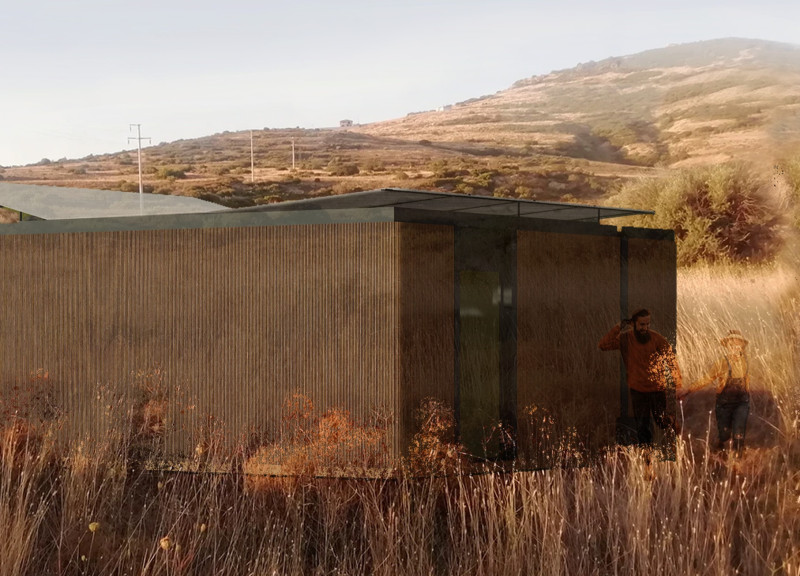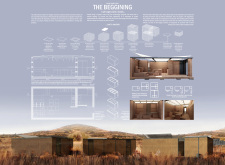5 key facts about this project
The design focuses on the urgent needs of individuals and families affected by the ongoing refugee crisis. Set in regions impacted by migration, the project emphasizes a modular living solution that prioritizes community, safety, and personal involvement. Known as "The Beginning," this concept allows residents to take part in creating their own homes, which provides a sense of stability during times of upheaval.
Modularity and Customization
At the heart of the design is its modularity. This allows users to adjust their living spaces according to personal needs. Given the varying cultural backgrounds of migrants, this flexibility is essential. The architecture is adaptable to different geographical areas, with wall thickness adjustable for local climate conditions, ensuring that the design remains effective regardless of location.
Sustainable Practices
Sustainability plays a key role in the development. The project utilizes natural materials in a way that prevents waste, reflecting a focus on ecological responsibility. Such considerations show an understanding of how proper material use impacts both the environment and inhabitants. Design elements are efficient and effective, supporting clean water management within each unit.
Interior Layout and Functionality
The interior spaces are designed with functional modular components. These units can conceal electrical and plumbing systems within the walls, optimizing the living area while maintaining a clean aesthetic. The inclusion of a rainwater collection system adds to the sustainability efforts, promoting responsible resource use.
Structural Configuration
The structural approach allows for flexible assembly, accommodating vertical and horizontal configurations. The roof is made from waterproof and translucent materials, enabling rainwater drainage and the entry of natural light into the interior. The sloped roof enhances ventilation, maintaining comfortable living conditions throughout various weather circumstances.
There is also consideration for future growth, as the design allows units to be expanded or connected, facilitating the creation of larger living spaces. This adaptability is crucial for communities as they develop over time, providing a solid foundation that supports long-term resilience and sustainability in challenging environments.



















































